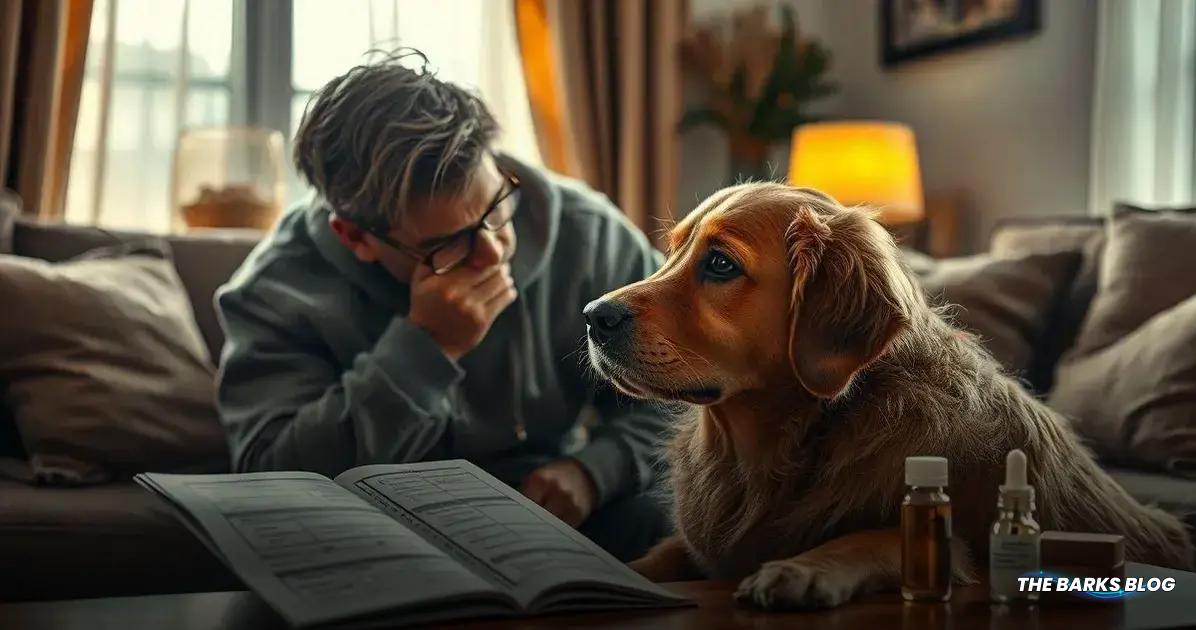Cataracts in dogs can cause significant vision issues if not addressed promptly. Early signs include cloudy eyes and changes in behavior. The primary treatment is surgical removal of the cloudy lens, which is generally successful. Post-operative care is vital for recovery, and managing any underlying health conditions is important. Regular veterinary visits and maintaining overall health can help prevent cataracts, improving your dog’s quality of life.
Cataracts in dogs can lead to serious vision problems if left untreated. Understanding the signs and treatment options is crucial for pet owners.
Did you know that dogs can suffer from cataracts just like humans? This condition can lead to blindness if not addressed, making it vital for pet parents to be aware of its signs and treatments.

Signs of Cataracts in Dogs
Recognizing the signs of cataracts in dogs early on can make a significant difference in your pet’s eye health. Here are some key indicators to watch for:
- Cloudy Eyes: One of the most noticeable signs is a cloudy or hazy appearance in one or both eyes. This can start as a slight cloudiness that may be difficult to see at first.
- Difficulty Seeing: If your dog seems to struggle with navigating familiar environments or bumps into furniture, it may indicate vision impairment caused by cataracts.
- Changes in Behavior: Dogs with cataracts may become more hesitant or fearful, especially in low-light situations. They might also show signs of anxiety when approaching stairs or unfamiliar areas.
- Rubbing or Pawing at Eyes: If you notice your dog frequently rubbing or pawing at their eyes, it could be a sign of discomfort or irritation related to cataracts.
- Increased Clumsiness: A dog with cataracts may appear clumsier than usual, struggling to catch toys or misjudging distances while playing.
- Changes in Appetite: Some dogs may show a decrease in appetite or interest in food if they are experiencing vision problems, as they rely heavily on sight to locate their food.
If you observe any of these signs in your dog, it’s essential to consult with your veterinarian for a thorough eye examination. Early detection and intervention can help manage the condition effectively and maintain your dog’s quality of life.

Treatment Options for Dog Cataracts
When it comes to treatment options for dog cataracts, early intervention is crucial. Here are the primary methods veterinarians may recommend:
Surgical Intervention: The most effective treatment for cataracts in dogs is surgery. During this procedure, the veterinarian removes the cloudy lens and replaces it with an artificial one. This surgery has a high success rate, with many dogs regaining significant vision afterward.
Pre-Surgical Evaluation: Before surgery, your vet will conduct a thorough evaluation to determine the overall health of your dog and the suitability of the procedure. This may include blood tests and a complete eye examination.
Post-Surgery Care: After cataract surgery, your dog will require special care, including medication to prevent infection and manage inflammation. Regular follow-up visits will also be necessary to monitor healing and ensure the new lens is functioning properly.
Management of Underlying Conditions: If cataracts are caused by underlying health issues such as diabetes or glaucoma, addressing these conditions is essential for the overall treatment plan. Your vet may recommend medications or lifestyle changes to help manage these issues.
Preventive Measures: While there’s no guaranteed way to prevent cataracts, maintaining your dog’s overall health through a balanced diet, regular exercise, and routine veterinary check-ups can help reduce the risk of developing eye problems.
It’s important to discuss all available treatment options with your veterinarian to determine the best approach for your dog’s specific condition and needs. With the right care, many dogs can lead happy, active lives even after cataract surgery.
Conclusion
Cataracts in dogs are a common condition that can significantly affect their quality of life if left untreated.
Recognizing the signs early, such as cloudy eyes and changes in behavior, is crucial for timely intervention.
With effective treatment options available, including surgery and management of underlying health issues, many dogs can regain their vision and continue to enjoy their daily activities.
As a responsible pet owner, staying informed about your dog’s eye health and seeking veterinary advice when needed can make all the difference.
Remember, regular check-ups and open communication with your veterinarian are key to ensuring your furry friend remains healthy and happy.
FAQ – Frequently Asked Questions about Cataracts in Dogs
What are the common signs of cataracts in dogs?
Common signs include cloudy eyes, difficulty seeing, changes in behavior, rubbing or pawing at the eyes, increased clumsiness, and changes in appetite.
How are cataracts diagnosed in dogs?
Cataracts are diagnosed through a thorough eye examination by a veterinarian, who will assess the clarity of the lens and the overall health of the eyes.
What treatment options are available for dog cataracts?
The primary treatment option for cataracts in dogs is surgical removal of the cloudy lens, which is replaced with an artificial lens. Management of any underlying health conditions is also important.
Is cataract surgery safe for dogs?
Yes, cataract surgery is generally safe and has a high success rate, with many dogs regaining significant vision post-surgery.
What is the recovery process like after cataract surgery?
Post-surgery, dogs will need medication to prevent infection and manage inflammation, along with regular follow-up visits to monitor healing.
Can cataracts be prevented in dogs?
While there is no guaranteed way to prevent cataracts, maintaining overall health through a balanced diet, regular exercise, and routine veterinary check-ups can help reduce the risk.




